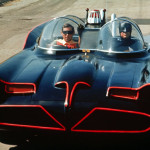Even if you’ve never been to LA, everyone has the image in their mind. Lane after lane, mile after mile of big, gas guzzling vehicles grumbling alone like wallflowers at a high school dance. A grey fog of smog hangs above as stationary as the cars and the drivers sit inside alone, fuming for hours on their way in and out of the city. Or, singing by themselves with the windows up.
If there was a starker image more in contrast with the sharing economy, I’d like to see it.
Car-sharing landing page images always contrast the most - it’s usually a group of relatively young, mid-20s to 30s gender balanced bunch laughing their assess of together driving down a forested road with every seat filled. The idea is that they have never met and are going somewhere together. Are they happy because they’re sharing a joke? or because they’re saving the environment, money, car performance, or the world? Could it be they’re singing together?
The sharing economy began with sharing apartments - but it’s ridesharing where collaborative consumption is ensuring users get the most out of their assets and truly contribute to reducing greenhouse gas emissions and save money.
So what is ride-sharing? Like the sharing economy itself, definitions are fluid and stick about as well as sand to a wall. Most people will immediately think Uber, or Lyft. However, the experts (who are few and far between) would probably not qualify these companies as ride-sharing, but rather “ride-sourcing.” The likes of these companies, Haxi and Sidecar included, are primarily commercial. The driver and the passenger do not share a destination and the relationship is an instantaneous, primarily commercial one. We are not arguing they are not part of the sharing economy, afterall, people are getting the most out of their car and their wallet - but they are not ride-sharing.
So if it’s not uber or lyft, what is ride-sharing? Think carpooling. Most of us have parents or friends who arranged to travel to work together, probably from the suburbs, into the city. In all likelihood it was coworkers or people from the same neighbourhood sharing an origin and destination. What’s changed is that the advent of social media and online marketplaces have allowed people who don’t know each or to share rides. They are sharing long distance drives, from Paris to Berlin for a concert. As more and more people are working from home and going to cities once or twice a week for work, they’re sharing one-offs in and out of town. They’re of course carpooling - because fewer people are choosing to, or are unable to, own cars.
Pioneers in the ride-sharing space are united by a similar mission: That the journey is as important as the destination. In the United States, Tripda is making ride-sharing accessible for everyone by reducing barriers and ensuring drivers and passengers trust one another. With 20 million users, BlaBlaCar in Europe is famous for doing its best to make sure everyone under the same roof gets along, pairing chatterboxes with chatterboxes and the silent types with the, not so chatty. In the UK, GoCarShare and Carpooling are cracking a tougher British market (it just ain’t that big) by focusing on a younger demographic and niche markets, such as students and football fans.
Ride-sharing is a policy area being taken seriously by governments interested in increasing incomes, reducing congestion and combating greenhouse gas emissions. However, the space continues to face challenges by legislators and users alike. Insurance providers are only now beginning to grasp the potential of this new market, whilst governments are still dithering about possible new taxation avenues and managing disruption to conventional services. There’s also that pesky issue of trust between drivers and passengers.
Ride-sourcing is a touchy subject for governments and businesses - it’s future in some cities is still a matter of debate at the moment. Ride-sharing, on the other hand, appears to be taking the quiet, back road to success as more and more like-minded travellers opt to save money, meet friends and cut down on carbon.
Start ride-sharing and stop singing alone (if you dare).

